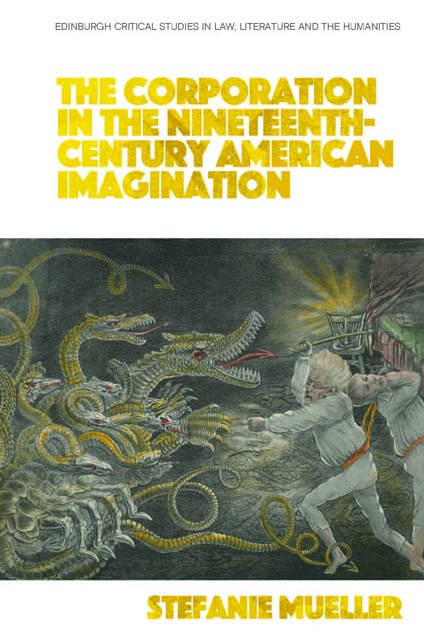Book contents
- Frontmatter
- Contents
- List of Figures
- Acknowledgments
- Introduction: The Many and the One: Corporate Bodies and the Body Politic in US Law and Culture
- 1 Narrating Monopoly and Empire: Austin, Irving, and the Charles River Bridge Case
- 2 The Soulless Corporation: Cooper and the Decline of the Republic
- 3 Satanic Corporate Agents in the Marketplace: Hawthorne, Melville, De Forest, and the Uses of Allegory
- 4 Incorporating the Nation: Ruiz de Burton and “Quasi Public” Corporations
- 5 The End of Individualism: Tarbell, Norris, and the Power of Combinations
- Conclusion: Frankenstein in a Gray Flannel Suit
- Bibliography
- Index
5 - The End of Individualism: Tarbell, Norris, and the Power of Combinations
Published online by Cambridge University Press: 25 April 2023
- Frontmatter
- Contents
- List of Figures
- Acknowledgments
- Introduction: The Many and the One: Corporate Bodies and the Body Politic in US Law and Culture
- 1 Narrating Monopoly and Empire: Austin, Irving, and the Charles River Bridge Case
- 2 The Soulless Corporation: Cooper and the Decline of the Republic
- 3 Satanic Corporate Agents in the Marketplace: Hawthorne, Melville, De Forest, and the Uses of Allegory
- 4 Incorporating the Nation: Ruiz de Burton and “Quasi Public” Corporations
- 5 The End of Individualism: Tarbell, Norris, and the Power of Combinations
- Conclusion: Frankenstein in a Gray Flannel Suit
- Bibliography
- Index
Summary
The final decade of the century had begun with yet another financial panic, but it would close with “the most significant merger movement in American history,” as Alfred D. Chandler Jr. writes. “In industry after industry the giant enterprise appeared” (“Industrial Corporation” 74). It was the era of trusts, of industrial concentration and consolidation; in short, of combination. Under the influence of the natural sciences, and in particular of Darwin’s theory of evolution, the emerging profession of American economists declared this trend “inevitable”: like any organism, they maintained, the industrial sector would grow ever larger and more complex. In the words of John D. Rockefeller: “The day of combination is here to stay. Individualism has gone, never to return” (qtd. in Nevins 622).
Legislation tried to stem the tide of what was a new age of monopoly, such as in the form of the creation of the Interstate Commerce Commission (1887) and the Sherman Anti-Trust Act (1890). The Act, which refers to “contract[s], combination[s] […] or conspirac[ies], in restraint of trade or commerce,” popularized the term combination, which became closely associated with trusts but also more generally with the phenomenon of large-scale industrial organization. Over time, combination’s more neutral meaning was almost replaced by its criminal meaning. Both dimensions yet informed Cooper’s use of the word in The Bravo, for example, and the entry on “conspiracy” in the 1839 edition of Bouvier’s Law Dictionary still reads, “CONSPIRACY, crim. Law, torts. An agreement between two or more persons to do an unlawful act, or any of those acts which become by the combination injurious to others.” By 1892, however, Bouvier’s has a separate entry on “combination” and the emphasis has shifted: “COMBINATION. A union of men for the purpose of violating the law. A union of different elements.”
When John D. Rockefeller signed the first trust agreement in January of 1882, it was to circumvent state law on foreign corporations that limited the Standard Oil Company’s ability to own out-of-state (“foreign”) corporations. Devised with the help of the company’s attorney, S. T. Dodd, this new form of trust was an agreement by which the shareholders of several companies abdicated control over their property to a separate body of trustees.
- Type
- Chapter
- Information
- The Corporation in the Nineteenth-Century American Imagination , pp. 141 - 190Publisher: Edinburgh University PressPrint publication year: 2022



